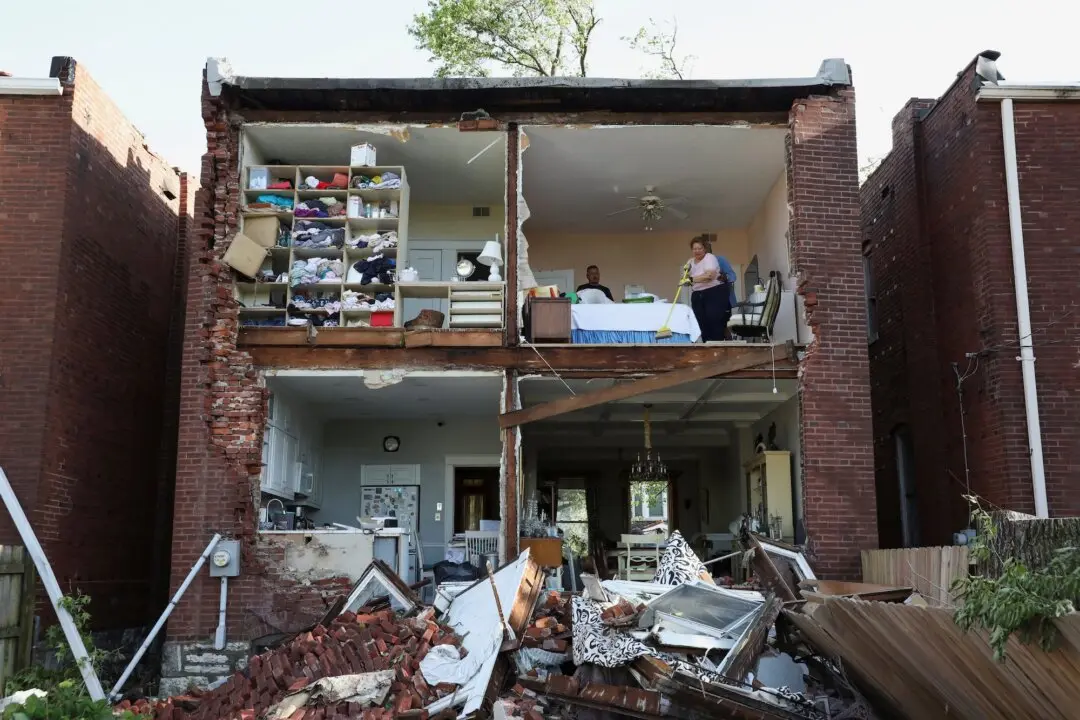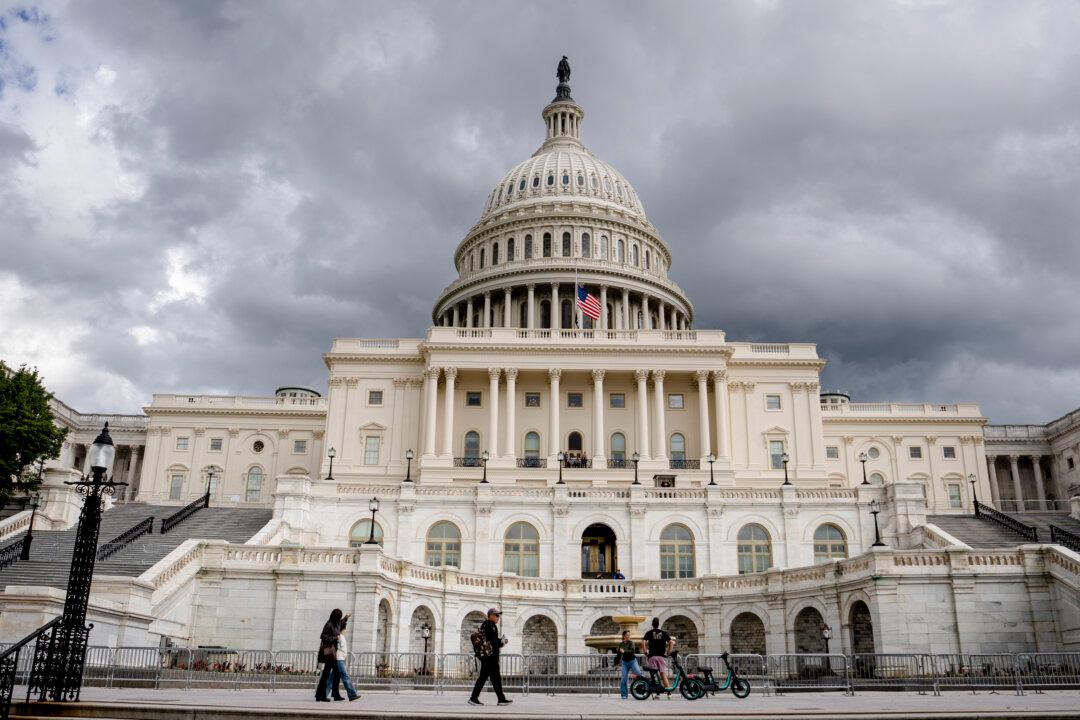Severe storms that swept across the Midwest and South on May 16 killed at least 27 people and injured dozens more, with Kentucky and Missouri among the hardest hit, according to officials.
“We’ve had more than our fair share of natural disasters in Kentucky in recent years,” Beshear said. “And while we can’t know why Kentucky keeps getting hit and it feels tough for our people to be facing this level of pain and destruction—one thing we know here in the commonwealth is how to come together, live our faith and values and help our neighbors in their time of need.”
The powerful weather system also left a trail of destruction across several states, killing seven in Missouri and two in northern Virginia, spawning tornadoes in Wisconsin, baking Texas in extreme heat, and covering parts of Illinois in a thick veil of dust.
Most of the Kentucky deaths were reported in Laurel County, where local officials said a tornado likely touched down at about midnight near the London-Corbin Airport. The storm leveled homes, tossed vehicles, and left behind widespread destruction in the largely rural area.
Shannon Ross, a volunteer with the United Cajun Navy, described witnessing two tornadoes from her property in Adair County, including a “really big, black one” and a smaller, thinner twister that struck nearby Russell Springs.
“It was traveling right over our house. ... It was like you could touch it,” Ross told The Epoch Times, comparing the experience to witnessing an airplane roaring above on its final approach to landing.
Ross said the twin tornadoes tore through multiple communities along a roughly 150-mile stretch, including Somerset and London, leaving widespread devastation.
“London is destroyed,“ she said. ”It looks like a bomb went off. There’s a lot of missing people, or injured people, unaccounted for. ... It looks like Hurricane Michael when it hit Panama City, Florida, at a Category 5.”
Ross, who joined the Cajun Navy after losing her home in a 2016 Louisiana flood, is now leading a coordinated relief effort from her base in Columbia, Kentucky. Supplies are being staged at her property, with about a dozen rescue teams en route from as far away as Baton Rouge, Louisiana; North Carolina; and Maryland. She said hundreds of volunteers are expected to cycle through the area in the coming days.
“We’re going to show up,“ she said, noting that the teams are in for the long haul. ”We’re going to help put these little cities back up. We don’t just come in the first day, drop off a bag of diapers and leave. ... We’ll be rolling 18-wheelers into this area for several months.”
London Mayor Randall Weddle described the scene as “unlike anything” he has witnessed. He told WKYT-TV reporters: “Lives have been changed forever here tonight. This is a time we come together, and we pray for this community.”
Missouri also faced deadly consequences on May 16, with at least seven people killed, including five in St. Louis. Mayor Cara Spencer confirmed the deaths and said more than 5,000 homes had been damaged. A curfew was imposed in the hardest-hit neighborhoods as emergency crews worked to clear debris and restore services.
“But for tonight—Please stay home tonight and allow our first responders to do their work. And please keep St. Louis in your thoughts and prayers.”

The National Weather Service said the storm system on May 16 brought widespread thunderstorms to the Mississippi, Tennessee, and Ohio valleys, producing at least six tornadoes in Missouri, Illinois, and neighboring states. The severe weather reached as far east as New Jersey, where another tornado was confirmed.
Forecasters issued an Enhanced Risk advisory for parts of north Texas and southern Oklahoma, citing “extreme instability” and the likelihood of supercell storms capable of producing damaging wind gusts, isolated tornadoes, and very large hail of up to 3 1/2 inches in diameter. Additional severe storms were also expected across upstate New York and western New England.






